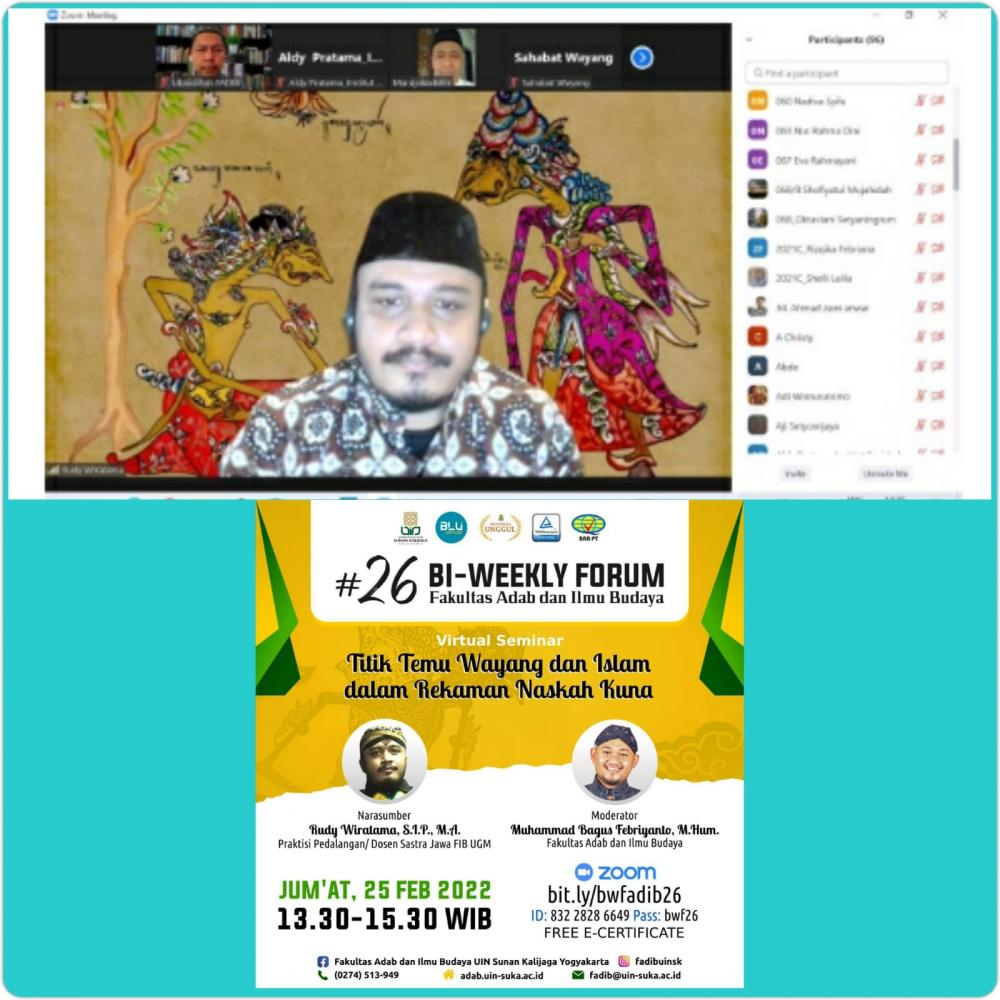Islam and the Javanese Shadow Puppet Theatre (wayang)

Islam and the Javanese Shadow Puppet Theatre (wayang)
Recently,the Javanese Shadow Theatre (wayang) has become a public debate, especially on social media. It is rooted in the controversial statement from Dr. Khalid Basalamah, one of the famous Muslim preachers in Indonesia, who said thatwayangis not permitted in Islam. Thus, pros and cons arise surrounding the issue.
Bi-Weekly Forum #26 Faculty of Adab and Cultural Sciences UIN Sunan Kalijaga held a virtual seminar about the interconnection betweenwayangand Islam in the Javanese Manuscript. The speaker,Rudi Wiratama, S.I.P.,M.A, is a lecturer of Javanese Literature at UGM and has a concern on Javanese shadow puppet theatre as well as a puppet master (dalang).The discussion, which was held on Friday, February 25, 2022, was moderated by a lecturer in the Faculty of Adab and Cultural Studies, UIN Sunan Kalijaga Yogyakarta,Muhammad Bagus Febriyanto,M.Hum.
It is common knowledge thatwayangpuppet theatre was used as a medium of Islamization in Indonesia, especially in Java that rooted in the 15th century. Since that time, the position ofwayangin Islamic tradition has always been debatable. Some argue thatwayangwas Hindu tradition and less Islamic. In this regard, Rudi suggests the importance of academia to study and preservewayangas it is used as a unique and indigenous tradition of Indonesian. They have to learn both classical and modern values fromwayang.
Rudi states that the Wali Songo spread Muslim teaching through arts such as poems, songs, andwayang. Sunan Kalijogo was known as one of the Wali Songo who introducewayangin Muslim society in Java. In addition, Rudi asserts that there are dynamics inwayangstories that are different from one time to another.Wayangin the Muslim era was different from the previous time. There were, Rudi said, the significant influence from Sufism inwayangstories. In conclusion, we have to broaden our understanding ofwayangas the cultural heritage of Indonesia. It is not static but has its dynamic following the cultural values, beliefs, and social change around it.
